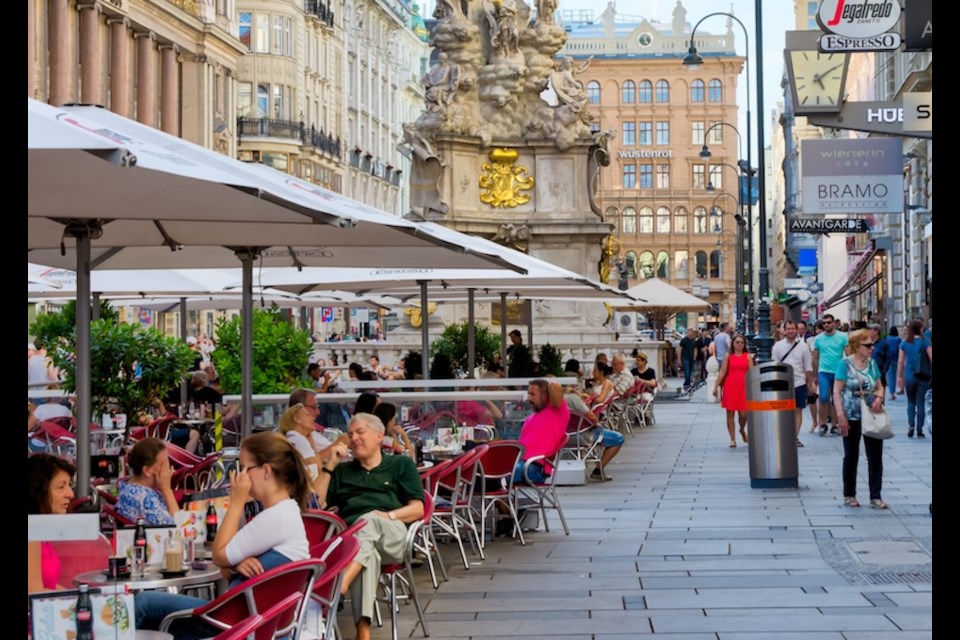From delicate pastries to rich chocolate torte, hearty sausages to Wiener Schnitzel, Vienna wows visitors with its simple and refined culinary favourites.
I recently spent five days exploring the world-class Austrian capital's rich food and wine culture and, of course, trying some of its coveted cuisine.
The Central European city is a gastronomic paradise from daybreak to after dark, with places to grab street food for under €10 or posh places to enjoy meals. While some restaurants tip the scales, several spots offer mid-range prices for travellers looking for traditional eats without draining their pockets. With this in mind, the Canadian dollar equals roughly about €0.64, meaning bills can creep up quickly for visitors from Vancouver.
Here are some of my picks for the top dishes and notable restaurants to try while visiting Vienna.
Sachertorte
Once the centre of the Habsburg Empire, Vienna has several famous dishes with historic origins. For instance, Austria is famous for a classic chocolate torte, known as Sachertorte, with a history as rich as the dessert.
Rebel Tours founder and guide Sebastian Knöbl told me the owner of the original recipe is long contested, with the restaurant where it was created claiming they own the rights to the famous recipe and the chef's family arguing it belongs to them.
.png;w=960)
Only two places in Vienna may legally say they have the original recipe: the Hotel Sacher and the Café Demel. It was originally created by a 16-year-old apprentice filling in for the chef in the court of Prince Metternich of Austria. The recipe was a roaring success and has delighted Austrian taste buds ever since.
Sachertorte is traditionally accompanied by a dollop of whipped cream. I enjoyed it at the Art Corner, conveniently located outside of the main entrance to the Belvedere Palace. While it is a Greek restaurant, their take on the iconic cake didn't disappoint and is a great treat after exploring the palace's incredible art collection.
Sausage stand culture
Wieners, otherwise known as sausages, are integral to Viennese food culture. In fact, the German word for Vienna is Wien, and in 2024, UNESCO officially included "Würstelstand," a term signifying the sausage culture, to its list of cities' characteristic social practices. Previously, the commission added the city's wine taverns and coffee houses to the official Viennese canon.
The Bizinger sausage stand is located by the Albertina museum in the historic city centre. The family-run business has operated in the stand since 1999, and also operates one at the Giant Ferris Wheel in the Prater.
Knöbl told me that many locals will see a show at the nearby Vienna State Opera and then visit the stand for a hot dog afterwards (the shows run several hours). The Bizinger is the only sausage stand in the city permitted to serve champagne. While they may all serve other alcoholic beverages, this one has special permission to pour champagne, thanks to its proximity to the museum and the opera.
The stand is hard to miss, owing to the massive blue rabbit with a big bottle of champagne perched on top of it. Typically, visitors must also wait in line, although waits vary based on the season (summers are busier) and the timing of operas.

I visited the stand on a rainy day, but I still had to wait a little while. Before long, I was at the front browsing an impressive selection of sausages, pretzels, alcoholic beverages, and more.
Huddling around a stand in the rain on a dismal day may not strike you as ideal, but I felt a sort of camaraderie among the other diners. While there's no seating, the stand has a long ledge under a protective overhang for people to place drinks and other items on.
I tried the original Bitzinger Käsekrainer, which came with a sausage wrapped in a bun, and it kept me full after a morning's exploration through the city. These sausages cost between €6 and €10, making it an affordable stop for any traveller.
A visit to Vienna simply isn't complete without a stop at one of these stands, which are located throughout the city, although this one's location is conveniently between iconic landmarks.
The Biztzinger reminds me of hot dog vendors you'll see on or near Vancouver's Granville Strip, such as Holy Smokes or Jumbo Hotdog, only in Vienna the sausage stands have more selection than at those or a Vancouver Canadians or Canucks game.
Vienna, like most major European cities, allows you to have an alcoholic beverage in the street, while Vancouver (aka "No Fun City,") does not permit. While I didn't enjoy an adult beverage at the Bitzinger stand, seeing people casually enjoying a beer with their sausage was nice.
Traditional Viennese cuisine: Wiener Schnitzel
The world-famous dish Wiener Schnitzel contains a call-out in its name to its founding city wherever it is eaten.
Lugeck Restaurant focuses on Wien (Vienna) tavern culture, serving up hearty classics and lighter interpretations of heavier meals. The restaurant is located in a historic building erected in the 14th century and renovated in 1897. It was used to stage parties for the Habsburg house and served as a place of shelter and trade for the merchants from Regensburg.
The restaurant is located immediately in the centre of the 1st District, providing easy access to Vienna's central city square, Stephansplatz.
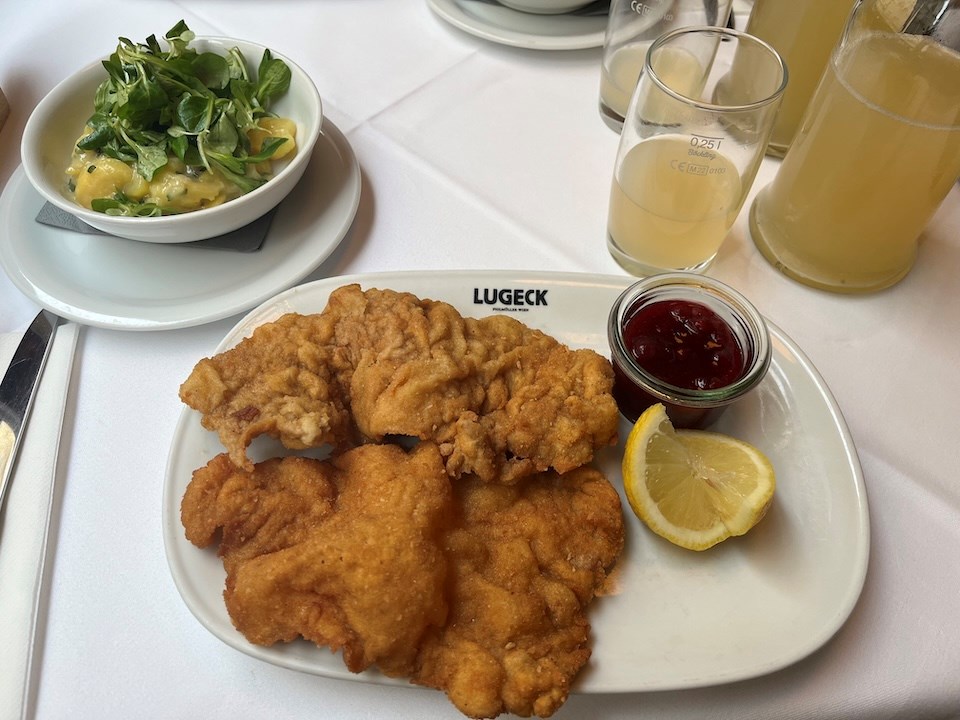
I opted for the classic Wiener Schnitzel with the traditional cranberry sauce on the side and a bowl of potato salad. North Americans may be surprised by the Austrian take on the dish. Instead of crunchy celery and hard-boiled eggs, the dish is dairy and egg-free, vinaigrette-based, and often dressed with mustard. Additionally, many restaurants, such as Lugeck, include a field salad. The dish is a lighter option to accompany the breaded veal dish (and their portions are extremely filling).
While some restaurants across Metro Vancouver serve Wiener Schnitzel it's often with mashed potatoes and gravy or other accompaniments you won't find in Austria.
I enjoyed mine with soda and apple juice. The combination is popular in the city, offering a lighter, carbonated drink to wash down a heavy dish.
Step inside a palace with several wine cellars, historic artifacts
No trip to Vienna is complete without a debriefing in the iconic city's historic wine culture.
Silvio Nichol is a two-Michelin-starred restaurant touted for its impressive multi-course fine-dining experiences with wine pairings, as well as its incredible location inside the Palais Coburg.
Generally, tables book up weeks, if not months, in advance, with many people adding it to the list of "must-dos" in the city. It pairs exquisitely with a night at the Viennese opera or a day strolling through palaces (although my experience came directly after a flight, which was an elevated introduction to the city's food culture).
Sommelier Maximilian Gurtler took me on a tour of the six wine cellars beneath the restaurant and hotel, featuring an impressive 5,200 labels of 60,000 bottles of red, white, sparkling, and everything in between. Part of the tour includes a history of the Habsburg Empire and the Stadtmauer.
Gurtler explained that part of the cellars were directly under the Stadtmauer, or the city wall that formerly surrounded Vienna. One area features one of Vienna's only remaining pieces with the original wall (the walls were demolished by Royal decree in 1858).
Emperor Suleiman attempted to overtake Vienna during the "Golden Age" of the Ottoman Empire and occupied the city's vineyard. Areas surrounding the wine cellars feature relics of this historical moment, including a poem written about the cultural clash.
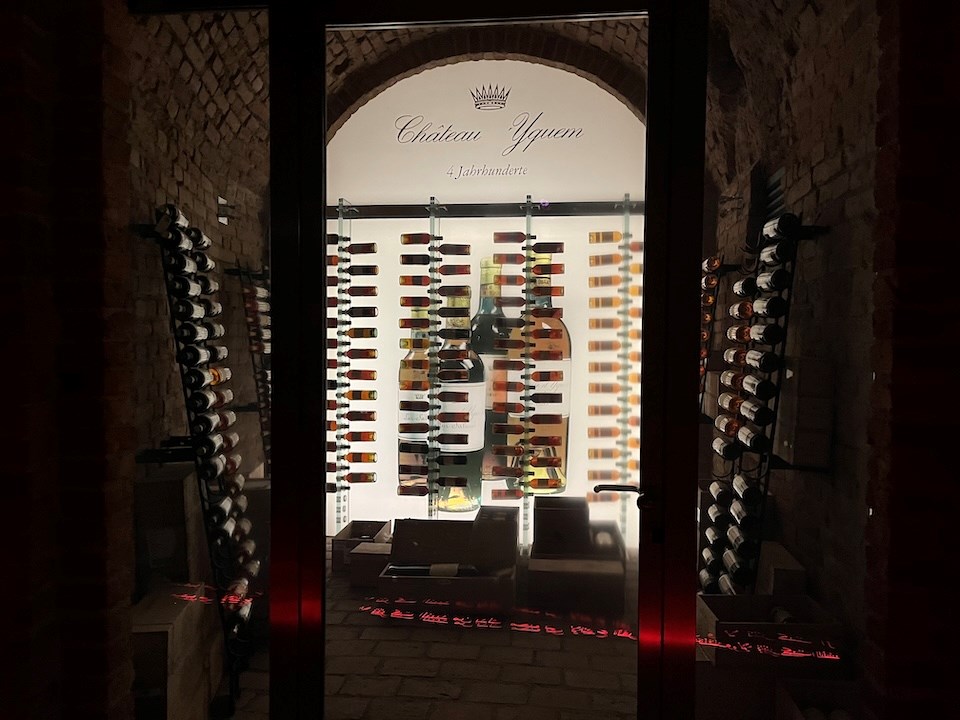
Cellar number one is a sweet wine cellar called "Château d'Yquem," a wine from the Sauternes region in Bordeaux, France. After 400 years of family ownership, luxury goods company LVMH Moët Hennessy Louis Vuitton purchased the majority of the sweet wine's shares in 1996. However, it has slowly been selling them off, Gurtler noted.
"We have one of the largest selections of Château d'Yquem in the world," he explains. "It's a wine that we like to show because of its incredible high quality. It's so extreme actually, that the berries are picked berry by berry. This is not where they harvest everything together and then make a selection; they go through the vineyard 10 or 15 times...to pick the most perfect grapes.
"The price is very high, but the quality is always the very best."
High-end dining experience in Vienna
While a tour of the wine cellars is reason enough to visit the restaurant, the multi-course menu with nine wine pairings was an immersive, unforgettable dining experience.
Many feel uncomfortable dining alone, and while I'm not opposed to the practice, it can feel awkward in certain circumstances or specific restaurants. This is not the case with Silvio Nichol's incredible cast of sommeliers, servers, and, of course, the man himself.
From the moment I entered the Palais Coburg, I was greeted by Sebastian Gabriel and warmly escorted to my table, where I was given a beautiful sealed menu with my name on it (a perfect keepsake). I was also immediately served a crisp glass of champagne and introduced to several servers.
Fresh bread and several butters came next, with one that had what appeared to be a delicate green garden growing on top. It had a smooth, easily spreadable texture, while the greens offered a refreshing hint of herbal flavour.
After an appetizer, I enjoyed several courses, including a rich duck liver paté with tangy raspberry sauce, as well as fresh cod served with decadent bone marrow and thinly-sliced cabbage on top. I was also served tender langoustines (a smaller crustacean similar to lobsters) with a cream sauce poured on top of them before my eyes.
I also enjoyed an ultra-tender, juicy slice of Iberico presa (pork from the shoulder area of the Spanish Iberico pig) served with gravy and a finely-chopped blood sausage on top of it. It was also accompanied by a slice of leek covered with a bed of fresh herbs.

The final course was four petit dessert creations, including a "false peanut" on a bed of the real deal (it melted in my mouth), a sweet treat laid on a mini movie theatre popcorn bag, a sweet with edible gold foil on a cube, and another sitting in a bowl of pistachios.
Throughout the meal, the servers and Sommelier Gurtler spent significant time with me, explaining the wine pairings and where all the ingredients came from. After dinner, Silvio Nickol greeted each dinner party warmly.
Viennese café culture
Viennese café culture has a long history in the city, particularly at the turn of the 20th century when intellectuals, artists, and political figures would gather to discuss new ideas. Some notable figures include the founder of psychotherapy, Sigmund Freud, and several high-ranking communist officials such as Leon Trotsky, Joseph Stalin, and Joseph Tito. Hitler also lived in the city with these figures in 1913.
Café Prünkel has served locals and visitors for over a century, making it a major player in Vienna's quintessential café culture.
The cafe describes itself as a "second living room," complete with special coffees, important foreign and domestic newspapers, traditional Viennese cuisine, fresh pastries, and a classic glass of water with each coffee.
I haven't ever been served a glass of water with my coffee in Vancouver, despite the Lower Mainland having an extensive network of cafés. Coveted spots dotted along quintessentially cool streets such as Commercial Drive and Main Street often have lengthy coffee lists and nostalgic interiors, but don't align with Vienna's seemingly timeless elegance.
For instance, Prado Café locations across Vancouver offer a minimalist take on the coffeehouse, but have more of a modern than traditional feel. Other spots, such as Mon Pitou Bistro & Bakery in Fairview, lean into a more European feel, but are much cozier than some of the grander Viennese options.
Many staff in Viennese coffee houses dress like servers in fine dining establishments, setting a more refined tone to the café culture.
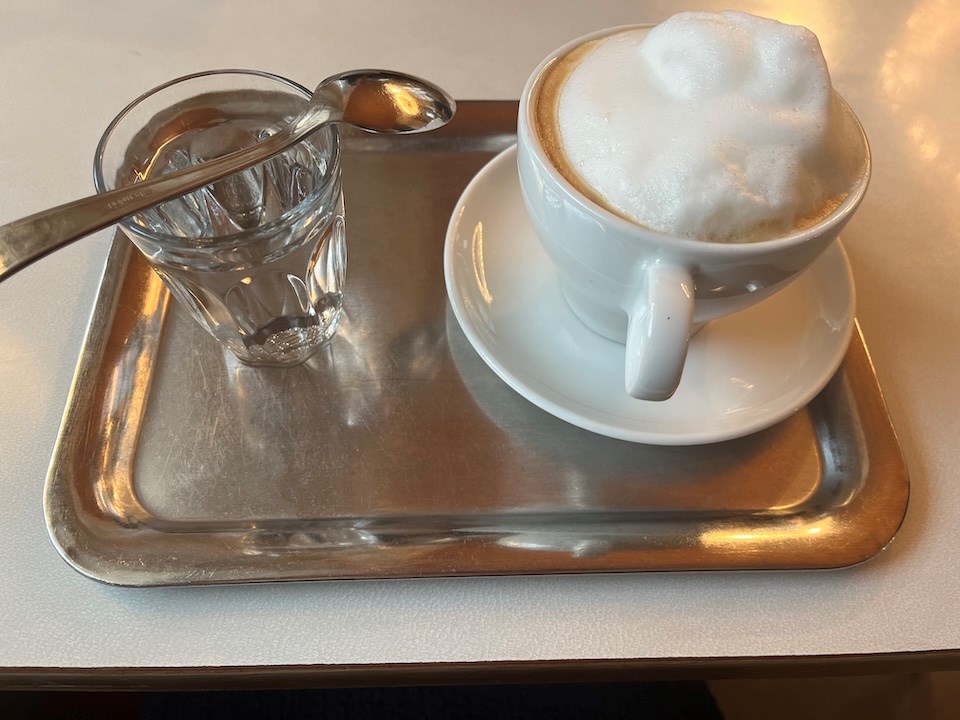
I enjoyed a melange, a coffee drink similar to a cappuccino consisting of one shot of espresso, steamed milk, and a little foam; the glass of water is used for cleaning your spoon after stirring your drink.
Along with the coffee, I tried their Kaiserschmarrn, which is a type of shredded pancake with powdered sugar served with a sweet accompaniment (in this case, plums).
Plant-friendly options in Vienna
Many people assume they won't find many vegetarian or vegan-friendly options in a city praised for its meat-centric dishes. However, plant-based travellers or those looking for meatless nights can enjoy dozens of spots to grab a meal.
I thoroughly enjoyed my dinner at Tian Restaurant Vienna, a restaurant lauded for its creative menus and fresh ingredients. It is the city's only vegetarian restaurant with a Michelin star, and was also awarded a Green Star by Michelin for its sustainable practices.
Chef de Cuisine Paul Ivić creates seasonal menus featuring produce from regional producers.
Top veggie-friendly, farm-to-table spots in Vancouver, such as high-end option The Acorn, may remind travellers of this spot, thanks to its fresh ingredients and focus on sustainability.
Vancouver is often ranked among the world's top cities for its plant-based offerings. But despite often being hailed as the "Greenest City," Vancouver hasn't received a Green Star from Michelin for any of its restaurants.
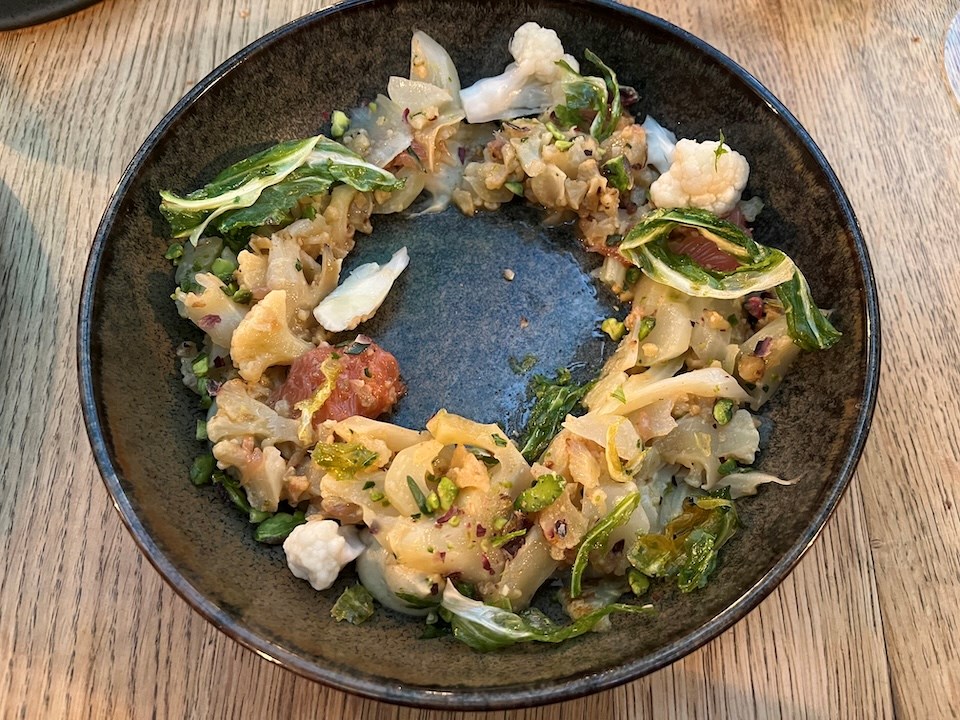
My dinner was a multi-course, vegetarian feast, complete with everything from gnocchi and asparagus to a vegetable medley bursting with flavour to celtuce (celery lettuce) with fennel and saffron.
Dessert was a light chocolate mousse with a treat on top, a tangy raspberry coulis, and a refreshing sorbet.
Other must-try restaurants in Vienna
- Glacis Beisl for authentic cuisine and an adorable outdoor patio near the popular MuseumsQuartier
- Praterwirt for hearty meals such as cheese dumplings, beef soup, and Wiener Schnitzel with a large selection of beer on tap.
- Café Goldegg: An adorable cafe open since 1910, where the servers all dress up, offering a selection of fresh-baked goods, hearty meals, classic Viennese coffees, and alcohol.
- Wrenkh: A pioneering Austrian vegetarian and vegan restaurant with a focus on a fresh seasonal menu.
Thanks to Development Counsellors International and the Vienna Tourist Board for facilitating a portion of the meals and activities mentioned above. All opinions and inclusions are those of the author and were based solely on personal experience. None of the businesses or entities featured were granted any previews of the story before publication or paid to be mentioned.
Find more information about exciting destinations in B.C. and across the globe, as well as travel deals and tips, by signing up for V.I.A.'s weekly travel newsletter The Wanderer. Since travel deals can sell out, find out the day they are posted by signing up for our daily Travel Deals newsletter.
Want to learn more about a specific destination or have a travel concern or idea you would like V.I.A. to write about? Email us at [email protected]. Send us stories about recent holidays that you've been on, or if you have any tips you think our readers should know about.
